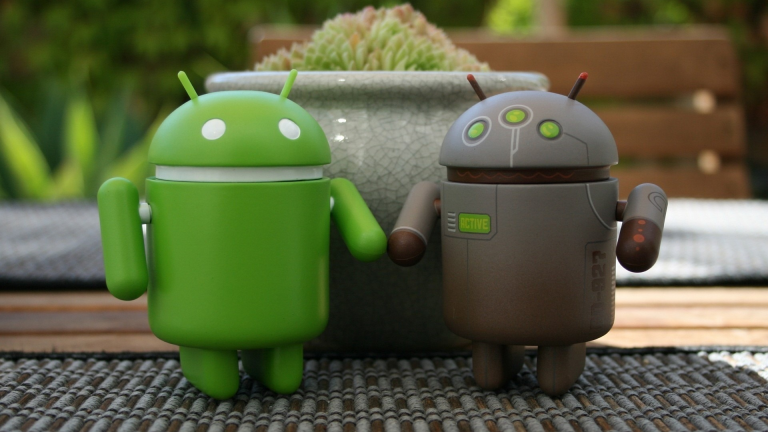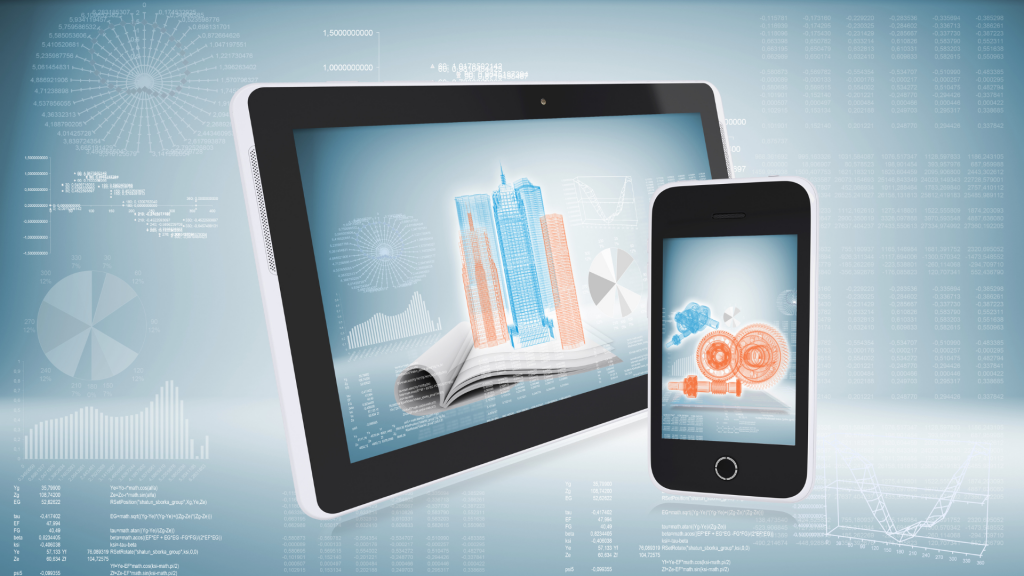
Tablets vs Smartphones: Which is Better for Enterprises
Let’s take a moment to look back at the recent past before we compare tablets and smartphones. We can divide devices into two eras – PC and post-PC. In the post-PC era, we should only consider modern mobile devices, not the earlier bulky handsets and feature phones. BlackBerry was once hugely popular among business executives, but eventually, both BlackBerry and Nokia were overshadowed by Android and iOS, making smartphones a ubiquitous term.
In the post-PC or, rather, a post-desktop world, laptops enjoyed their fair share of success. They still hold a decent share of device sales, but the share is fading, thanks to what was the next device revolution—tablets—with Apple iPads creating a stir. While at the time of their inception, smartphones and tablets were seen from a pure entertainment point of view, it’s not the case anymore.
Organizations were embracing enterprise mobility before, but the pandemic adversity led to the expansion of device usage horizon. Even after the contagion has subsided, working from home or anywhere is commonplace with many organizations, and there’s even a mixed model of a hybrid workplace. Therefore, the use of tablets and smartphones for work has skyrocketed.
A suitable mobile device can greatly improve productivity and efficiency in today’s fast-paced business world. In this blog, we’ll dive into enterprises’ work requirements and find the right fit between the two trendy mobile device options: tablets and smartphones.

Here’re a 4 criteria to assess which employee and what kind of work requires tablets and smartphones
1. Screen Real Estate
Is the experience of watching Avatar 2 on the big screen of a movie theater in a digital, surround sound 3D environment the same as watching it on a smartphone or tablet? No way! It’s an entertainment experience example; however, it puts the workplace experience argument into perspective. Thus, screen real estate or screen size (area) must be among the primary factors in choosing between a tablet or a smartphone for work purposes.
A typical smartphone screen size (L x B) is 10 x 17 cm, while that of a typical tablet is 15 x 25 cm. The screen size of smartphones has become larger over the years (yes, the obsession with watching videos and movies on smartphones is real). Yet, if it’s a smartphone, you’d want it to fit within your palms and pockets.
A large screen is apt for tasks requiring longer screen time and focus. Tasks like report creation or making notes need more device time; hence, more time is spent on the screen. This is where tablets come in handy. After all, no matter how chic your latest smartphone is, you wouldn’t prefer it to create a report on the mobile device management market. Due to the larger screens, tablets are also best suited for content-related work like presentations, document writing/editing, data sheets/entry, etc. One of the key benefits of a tablet is that it is lighter and more compact than a laptop but can perform almost any task that a laptop can.
2. Portability
Desktop PCs for long were the mainstay devices of many enterprises, albeit they have zero portability. As enterprise mobility gathered steam, desktops weren’t feasible devices for a mobile workforce. Moving around with desktop PCs is impossible, even within office premises, unless you have some strange superpowers. None of us do in the real world! Laptop PCs offer portability only to a certain extent. Considering their requisite peripherals, like a charger or mouse, you’d not like to carry them around too often and for too long. The crux is that laptops and desktops aren’t handheld devices. Tablets and smartphones are.
Smartphones and tablets tick all the portability boxes, whereas smartphones take the bigger piece of the cake for portability with more convenience. Tablets are handy, but they still need a briefcase when people are moving. You’ll rarely see people taking their tablets to lunch or breaks at work. Some even leave them behind at their desks when they leave for the day. That’s never the case with smartphones.
This makes a strong case for smartphones in tasks where employees must always be on the move. As smartphones are always with the users, they fit tasks where immediate response to emails, texts and notifications is inevitable.
3. Device Specifications
This is where the battle among handheld tech wonders gets very tight—this is the round of specifications.
Battery:
Modern-day smartphones offer terrific battery life and fast-charging options. Tablets have larger batteries which also implies higher durability. It’s a tough call to pick a winner here. Therefore, in the round of batteries, it’s love all!
Storage:
In the storage battlefield, again, there’s not much to choose from. This is where purists will vouch for desktops and laptops with storage capacities that no smartphone or tablet can match, at least to date. But our tablet vs. smartphone show must go on!
4. Device Features
Well, this could turn out to be the tie-breaker in this smartphone and tablet match-up.
Calling & Texting
Tablets can make and take calls, but holding a tablet next to your face and conversing is not conducive. There’s no SMS option on tablets, while other messaging apps like WhatsApp and Messenger can run as regular apps. Again, even with these apps, the experience of texting using tabs isn’t velvety. Smartphones are nifty for calling and texting. Thus, smartphones have a clear edge over tablets for enterprise tasks requiring an employee to text and call constantly.
Video Calling
Many work profiles entitle multiple video calls throughout the day. One can use smartphones for video calls. However, holding a smartphone in one hand while in a video meeting can lead to inconvenience and awkwardness. Tablets are suitable in this context. You can place them on a table, so both hands are free. You can just go and fill your coffee without creating background disturbances for your teammates or clients. Thus, tablets are the device of choice for profiles involving many video interactions.
Camera
Let’s face a simple fact. Tablets were not designed with the core competency of taking high-res photos or videos. The camera specs of new-age smartphones are impeccable. The innovations OEMs introduce to smartphones today are remarkable. Remember the Apple campaign — “Shot on an iPhone”. Hence, a smartphone is the right choice when employees must take many pictures and videos to share with enterprise teams or clients.
Extensions and UI/UX
Let’s delve into a use case here. To expedite a sales presentation, browsing multiple tabs and a nimble, user-friendly keypad are necessary. While working on multiple tabs is possible on a smartphone, it’s not a breezy effort. Smartphone keypads have screen area limits and, thus, don’t offer extensive agility. You need a tablet to get this sales presentation right and ready on time. You can even connect external hardware like a keyboard to tablets, which is impossible with smartphones.
The question of which device exhibits a better UI/UX is debatable and can vary as per employee and work requirements. Designers may prefer tablets for the love of wider view flips, whereas DevOps may choose smartphones to review mobile optimization of landing pages.
Smartphones and tablets are no longer tied to consumer hands. Both are slowly taking over tasks previously handled by desktops. However, saying that desktops are gradually being replaced wouldn’t be exactly true. There are certainly a lot of tasks where using desktops would be the more optimal choice. The right device can only be finalized after checking if it’s a proper fit for your use case.
Smartphones and tablets are no longer tied to consumer hands. Both are slowly taking over tasks previously handled by desktops. However, saying that desktops are gradually being replaced wouldn’t be exactly true. There are certainly a lot of tasks where using desktops would be the more optimal choice. The right device can only be finalized after checking if it’s a proper fit for your use case.
So, devices of different platforms will be used within the workplace. The fact is irrefutable. To manage all the other devices used within the enterprise, we need a single standard solution. When it comes to deploying devices in bulk, using a MDM solution is again, the better solution. For devices of all platforms? An End-To-End Management would be the best solution. Choosing your tool is an essential first step. Keeping your devices secure is your second.
Ghosh, A. (2023, March 30). Tablets vs Smartphones: Which is Better for Enterprises. Scalefusion Blog | MDM, EMM, Product Updates, Thought Leadership & SaaS; Scalefusion Blog. https://blog.scalefusion.com/tablets-vs-smartphones-which-is-better-for-enterprises/
Related posts
Sorry, the comment form is closed at this time.







